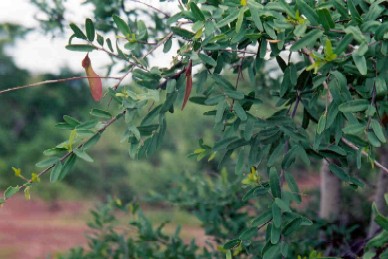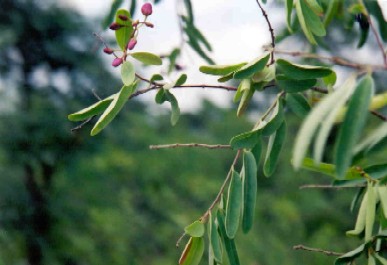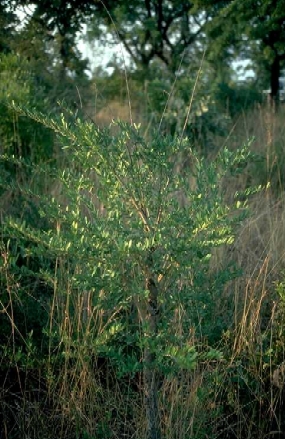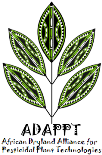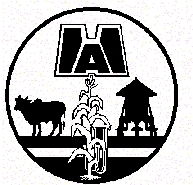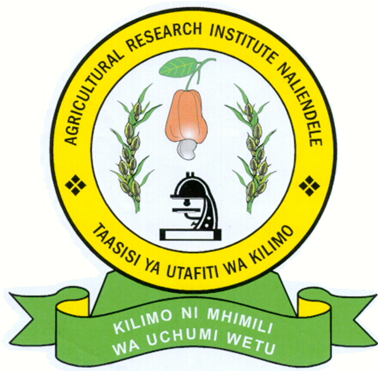| Home |
| What's New? |
| Pesticidal Plants |
| Objectives |
| Activities |
| Our Advisors |
| Plants Database |
| Partners |
| Publications |
| Links |
| Contact Us |
| Using this Site |
| The 1st International Conference on Pesticidal Plants |
Securidaca
longepedunculata
Polygalaceae
General
Securidaca
longepedunculata fact sheet (ICRAF)
Small tree up to about 6 m. or shrub, sometimes spiny;
stems usually pubescent at first, becoming glabrous. Leaves petiolate;
lamina 1–5 x 0.5–1.8 cm., very variable in size and shape,
from broadly oblong to very narrowly elliptic, usually minutely pubescent
when young, soon becoming glabrous; petiole up to 5 mm. long. Flowers
pink or purple sometimes variegated with white, sweet-scented, pedicels
up to 14 mm. long, pubescent, in terminal or lateral racemes, 3–5
cm. long, often borne on short shoots which become spiny, with minute,
deciduous bracts and bracteoles and pubescent rhachis. Posterior sepal
up to 5 x 4 mm. ovate-acuminate, with ciliate margins; wing sepals 5–11
x 4–9 mm., suborbicular, nearly glabrous; anterior sepals up to
5 x 4.5 mm., broadly ovate. Upper petals up to 7.5 x 3.5 mm., narrowly
elliptic, ciliate at the base; carina up to 10 mm. long with a small lobed
appendage about 1 mm. long near the apex. Staminal sheath ciliate on the
upper margin. Fruit 3–5 x 0.8–2 cm., with an oblong or elliptic
somewhat obliquely curved wing, sometimes with a second rudimentary wing.
Nut containing the seed 8–10 mm. in diam., rugulose or smooth.
Found in various types of woodland and wooded grassland across sub-Saharan Africa. It's rarely gregarious and a very variable species in leaf-shape and flower-size as well as in habit and extent to which spines develop. It has been subdivided by various authors into a number of varieties. Specimens from Mozambique coastal regions tend to have longer, narrower leaves, while some of the smallest and roundest leaves occur on specimens from Angola. There is, however, great variation in most parts of the range.This is known as the Violet Tree owing to the scent of the flowers. The bast produces a useful fibre which the Africans use as cotton and from which they used to weave a coarse cloth. An infusion of the roots is used as a remedy for snake-bite and also as a poison
Plant parts with insect-controlling properties
roots, root bark, stem bark
Mode of action
stomach poison, anti-convulsant, purgative, repellent,
toxic, anti-inflammatory, anti-fertility
Target organisms
used as a fish poison, various medicinal treatments,
as a molluscicide, insecticide, particularly stored product protection
Preparation and application
Whole roots (i.e. lateral branches) are dug up without
uprooting the entire plant. Only a few roots can be taken from each plant.
The roots are then dried in the shade for a few days. The bark is either
stripped and pounded or the entire root is pounded. This is then admixed
with stored grain. Alternatively the pounded roots are soaked in water
overnight and the water extract is used as a grain dip.
